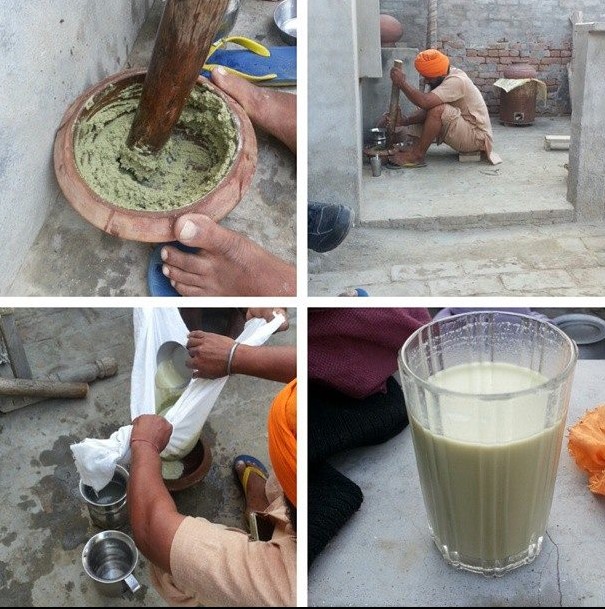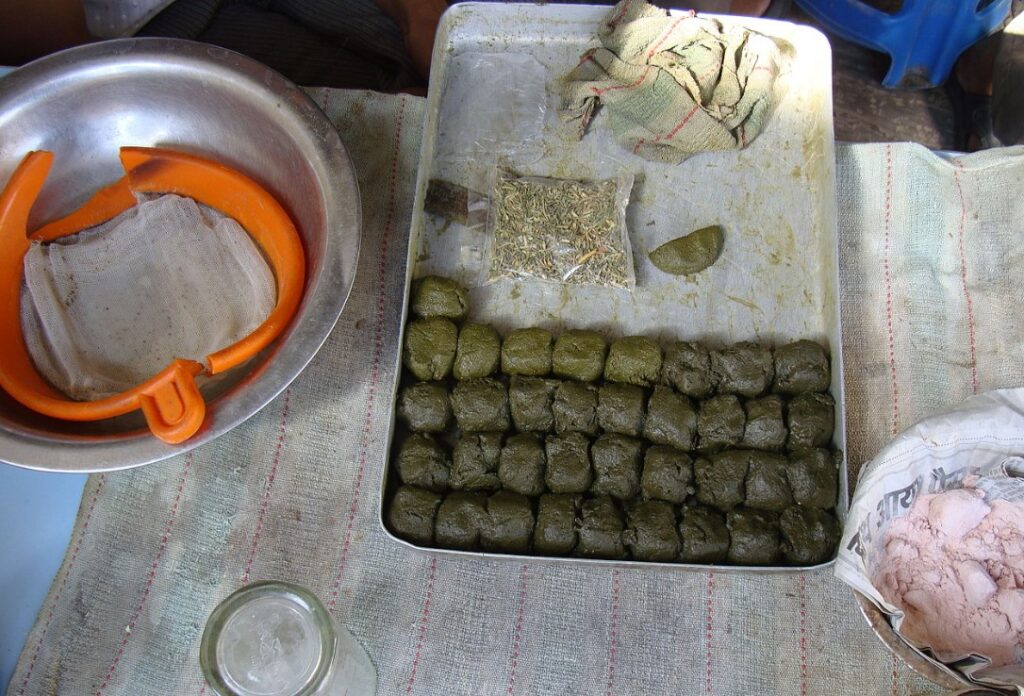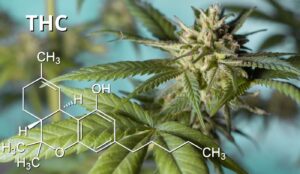Bhang, an integral part of various cultural practices and culinary traditions, is a term that resonates with a rich tapestry of history and significance. Defined as a preparation made from the leaves and flowers of the cannabis plant, Bhang has been woven into the fabric of societies for centuries. Its roots extend deep into the annals of cultural, religious, and medicinal practices, making it a subject of both reverence and curiosity. In this exploration, we embark on a journey to unravel the layers of Bhang, delving into its multifaceted nature, cultural importance, and the artistry behind its culinary transformations. Join us as we navigate the diverse landscape of Bhang, where history, culture, and cuisine converge in a fascinating blend.
Table of Contents:
- What is Bhang?
- Chemical Composition
- Bhang Origins and History
- How to Make Bhang
- Bhang Recipes
- Bhang Lassi Recipe
- Bhang Chocolate Recipe
- Bhang Drinks (e.g., Bhang Thandai)
- Other Bhang-infused Recipes
- Health Considerations
- Conclusion
- References-and-further-reading
What is Bhang?
Bhang, a venerable preparation with roots steeped in tradition, is derived from the leaves and flowers of the cannabis plant, Cannabis sativa. This ancient concoction holds a distinctive place in cultural, religious, and medicinal practices across various regions, embodying a harmonious blend of psychoactive and therapeutic properties.
Overview of Bhang: At its core, Bhang stands apart as a holistic form of cannabis consumption, encompassing the entire plant, including leaves and flowers. This sets it apart from derivatives like marijuana, which focuses on flowering tops, and hashish, derived from resin. Bhang’s comprehensive use contributes to a nuanced experience, marking its significance in traditional rituals and modern contexts alike.
Traditional Forms of Bhang:
Grounded in time-honored practices, traditional forms of Bhang involve the meticulous preparation of a paste from the cannabis plant. The process often includes grinding the leaves and flowers into a fine consistency, creating a base that serves as the foundation for a myriad of consumables.
- Bhang Thandai: A venerable creation, Bhang Thandai is a traditional Indian beverage that combines the Bhang paste with a mixture of milk, nuts, and aromatic spices. Consumed during festivals like Holi, it reflects the cultural integration of Bhang into festive celebrations.
- Bhang Lassi: Another cherished classic, Bhang Lassi melds the cannabis paste with yogurt, sweeteners, and spices. This smooth and flavorful concoction is often associated with religious occasions and social gatherings.
- Bhang Pakoras: In some regions, Bhang paste is ingeniously incorporated into fried snacks known as pakoras, offering a savory twist to traditional Bhang consumption.
- Bhang Sherbet: A refreshing take on the traditional, Bhang Sherbet involves diluting the cannabis paste in a sweetened fruit-based beverage, offering a cooling respite during warm seasons.
Chemical Composition
The allure of Bhang extends beyond its cultural and culinary dimensions, delving into the intricate realm of its chemical composition. Understanding the active compounds in Bhang unveils the complex interplay of substances that shape its effects on the body and mind.
Active Compounds in Bhang:
Bhang owes its psychoactive and therapeutic properties to a myriad of compounds present in the cannabis plant. The primary actors in this botanical ensemble are cannabinoids, notably THC (tetrahydrocannabinol) and CBD (cannabidiol). THC is renowned for its psychoactive effects, imparting the characteristic ‘high’ associated with cannabis consumption. On the other hand, CBD offers a more nuanced influence, often associated with relaxation and potential therapeutic benefits.
Beyond cannabinoids, Bhang contains terpenes, aromatic compounds responsible for the distinct fragrance of cannabis. These contribute to the overall sensory experience and may also influence the plant’s effects. The synergistic interaction between cannabinoids and terpenes, known as the entourage effect, enhances and modulates the overall impact of Bhang.
Effects on the Body and Mind:
The consumption of Bhang initiates a cascade of effects on the human body and mind, each shaped by the unique interplay of its active compounds.
- Psychoactive Effects: THC, as the primary psychoactive compound, induces alterations in perception, mood, and cognition. The intensity of these effects can vary based on factors such as dosage, individual tolerance, and the presence of other cannabinoids.
- Euphoria and Relaxation: Bhang, often celebrated for its euphoric qualities, can induce a heightened sense of well-being and relaxation. This emotional uplift is a key aspect of its cultural and social use.
- Potential Therapeutic Benefits: CBD, with its non-intoxicating properties, is associated with potential therapeutic benefits. Research suggests that Bhang may offer relief from conditions such as chronic pain, anxiety, and certain neurological disorders.
- Cognitive Impacts: While Bhang can enhance creativity and introspection for some, excessive consumption may lead to impaired memory and concentration.
- Physical Effects: Bhang can influence physical sensations, leading to heightened sensitivity, relaxation of muscles, and changes in perception of time.
It is crucial to approach Bhang consumption with mindfulness, recognizing that individual responses can vary. The intricate dance of cannabinoids and terpenes within Bhang creates a nuanced experience, weaving together the cultural, chemical, and experiential dimensions of this ancient preparation.
Bhang Origins and History
The story of Bhang unfolds through the annals of time, intertwining with diverse cultures, religions, and evolving consumption practices. Delving into its origins and historical journey provides a glimpse into the enduring legacy of this venerable preparation.
Historical Use of Bhang:
Bhang’s historical roots can be traced back thousands of years, with evidence suggesting its use in ancient civilizations across Asia and the Middle East. In ancient India, Bhang found its place in religious rituals, believed to connect individuals with divine realms. Historical texts, such as the Atharva Veda, reference the use of cannabis in sacred ceremonies, showcasing its integral role in early Indian culture.
As trade routes expanded, Bhang traveled to different regions, adapting to local customs and weaving itself into the cultural fabric of societies. From ancient China to the Islamic world, Bhang’s historical use reflects a diverse tapestry of traditions and beliefs.
Cultural and Religious Significance:
Bhang’s significance extends far beyond its botanical origins. Across various cultures, it has been embraced for its role in religious ceremonies, rites of passage, and festive celebrations. In Hinduism, Bhang holds a sacred status, particularly during the festival of Holi, where its consumption is considered auspicious.
Beyond Hinduism, Bhang has also played a role in Sufi traditions, where it is believed to facilitate spiritual experiences. Its use in both Hindu and Sufi contexts highlights the diverse ways in which Bhang has been integrated into religious practices, fostering a sense of connection and transcendence.
Evolution of Bhang Consumption:
The consumption of Bhang has undergone a fascinating evolution over the centuries. Initially ingested in its raw form or as a paste, Bhang has adapted to changing times and preferences. Traditional methods of preparation, such as Thandai and Lassi, have persisted through generations, maintaining their cultural significance.
In recent times, Bhang has experienced a modern renaissance, with innovative recipes and preparations emerging. From Bhang-infused chocolates to contemporary beverages, its evolution reflects a dynamic interplay between tradition and innovation.
As we explore the origins and history of Bhang, we unravel the threads that connect this ancient preparation to the cultural, spiritual, and social landscapes it has traversed over millennia. The evolution of Bhang mirrors the resilience of cultural practices and their ability to adapt while preserving their inherent essence.
How to Make Bhang
Embarking on the journey of crafting Bhang involves a delicate balance between tradition and innovation. Whether following age-old techniques or embracing contemporary methods, the art of making Bhang unveils a spectrum of possibilities that cater to diverse preferences and cultural contexts.
Traditional Methods:
Rooted in cultural heritage, traditional methods of making Bhang emphasize a meticulous process that respects the historical significance of this preparation.
- Harvesting and Preparation: Begin by harvesting the leaves and flowers of the cannabis plant. The selection of high-quality, mature plants is crucial. After harvesting, the leaves and flowers are carefully dried.
- Grinding and Paste Formation: The dried cannabis material is finely ground to create a paste. This paste serves as the foundation for various Bhang recipes. Traditionalists often use mortar and pestle for grinding, ensuring a consistent and smooth texture.
- Infusion in Base Ingredients: The Bhang paste is then infused into a base ingredient, depending on the intended recipe. This can include milk for Bhang Thandai, yogurt for Bhang Lassi, or other mediums for different culinary creations.
Modern Approaches:
In contemporary settings, modern approaches to crafting Bhang have emerged, embracing technological advancements while retaining the essence of the preparation.
- Extraction Methods: Modern Bhang production often involves extraction methods to isolate cannabinoids and terpenes. This can include the use of solvents or specialized equipment to obtain a concentrated form of cannabis.
- Infusions in Edibles: With the rise of cannabis-infused edibles, Bhang has found its way into chocolates, gummies, and other treats. Commercially available cannabis extracts are incorporated into these products, offering a convenient and precise way to enjoy Bhang.
Common Ingredients: The ingredients used in making Bhang contribute to its flavor, aroma, and overall experience. While variations abound, certain elements are commonly found across different recipes.
- Cannabis Leaves and Flowers: The primary ingredient, cannabis leaves, and flowers provide the foundation for Bhang. The choice of strain can influence the flavor and effects.
- Base Ingredients: Depending on the desired Bhang creation, base ingredients like milk, yogurt, or other mediums are used to infuse the cannabis paste.
- Sweeteners and Spices: To enhance flavor, sweeteners such as sugar or honey are commonly added. Spices like cardamom, cinnamon, and nutmeg contribute to the aromatic profile of Bhang.
- Optional Additions: Depending on regional variations and personal preferences, additional ingredients like nuts, saffron, or rosewater may be included for a unique touch.
Whether adhering to time-honored rituals or exploring modern innovations, the process of making Bhang remains a dynamic expression of cultural heritage and contemporary creativity. As we navigate the techniques and ingredients involved, the artistry of crafting Bhang comes to life, offering a sensory journey that spans tradition and modernity.
Bhang Recipes
Embarking on a culinary exploration of Bhang opens a realm of possibilities, where traditional recipes harmonize with modern creativity. From classic concoctions to contemporary delights, these Bhang-infused recipes showcase the diverse and delectable ways in which this ancient preparation can be savored.

Bhang Lassi Recipe:
Ingredients:
- 1 cup Bhang paste
- 2 cups yogurt
- 1/2 cup milk
- 1/4 cup sugar (adjust to taste)
- 1/2 teaspoon ground cardamom
- Crushed ice
Instructions:
- In a blender, combine Bhang paste, yogurt, milk, sugar, and ground cardamom.
- Blend until the mixture is smooth and well combined.
- Add crushed ice and blend again until the Lassi reaches a refreshing consistency.
- Pour into glasses and garnish with a sprinkle of cardamom.
- Serve chilled and savor the distinctive flavors of this timeless Bhang creation.
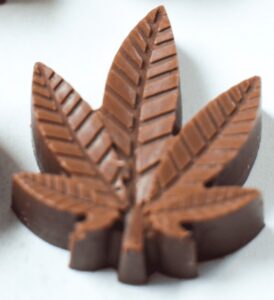
Bhang Chocolate Recipe:
Ingredients:
- 1/2 cup Bhang paste
- 1 cup dark chocolate (chopped)
- 1/4 cup unsalted butter
- 1/4 cup powdered sugar
- Cocoa powder for dusting
Instructions:
- Melt the dark chocolate and unsalted butter in a double boiler until smooth.
- In a separate bowl, mix the Bhang paste and powdered sugar.
- Combine the melted chocolate mixture with the Bhang paste mixture, ensuring a homogeneous blend.
- Pour the mixture into molds or a lined tray and refrigerate until set.
- Once solidified, cut into desired shapes and dust with cocoa powder.
- Indulge in the rich and decadent experience of Bhang-infused chocolate.
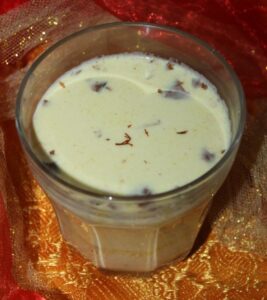
Bhang Drinks (e.g., Bhang Thandai):
Ingredients:
- 1 cup Bhang paste
- 2 cups milk
- 1/4 cup almonds (soaked and peeled)
- 1/4 cup cashews (soaked)
- 1/4 cup melon seeds (soaked)
- 1/2 cup sugar (adjust to taste)
- 1/2 teaspoon fennel seeds
- 1/2 teaspoon poppy seeds
- 1/2 teaspoon cardamom powder
- Rose petals for garnish
Instructions:
- In a blender, combine Bhang paste, soaked almonds, cashews, melon seeds, and fennel seeds.
- Blend until you achieve a smooth paste.
- In a separate bowl, mix milk, sugar, poppy seeds, and cardamom powder.
- Combine the milk mixture with the Bhang paste mixture.
- Strain the Thandai to remove any solids.
- Chill the Bhang Thandai in the refrigerator.
- Serve in glasses, garnished with rose petals, for a refreshing and cultural experience.
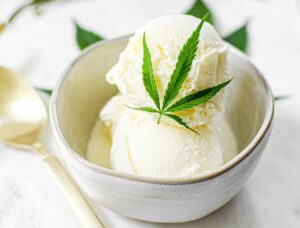
Other Bhang-infused Recipes:
- Bhang Pakoras:
- Prepare a batter with gram flour, water, and Bhang paste.
- Dip vegetables of your choice into the batter and fry until golden brown.
- Enjoy these savory Bhang-infused pakoras with chutney or sauce.
- Bhang-infused Ice Cream:
- Mix Bhang paste into a base of your favorite ice cream recipe.
- Freeze until solid and indulge in a cool, cannabis-infused treat.
These Bhang-infused recipes provide a tantalizing glimpse into the versatility of this ancient preparation, where flavors, textures, and cultural influences converge to create an array of culinary delights. Whether sipping a chilled Bhang Lassi or savoring the richness of Bhang Chocolate, each recipe invites enthusiasts to experience the artistry and diversity of Bhang in the realm of gastronomy.
Health Considerations
As we delve into the multifaceted world of Bhang, it’s essential to navigate the spectrum of health considerations associated with its consumption. Understanding both the potential benefits and risks is crucial for responsible engagement with this ancient preparation.
Potential Health Benefits: Bhang, with its rich chemical composition, has been linked to potential therapeutic benefits. Research suggests that cannabinoids, such as CBD, may offer relief from conditions like chronic pain, anxiety, and certain neurological disorders. The holistic use of the cannabis plant in traditional preparations adds layers to its potential health contributions.
Risks and Side Effects: However, it’s imperative to approach Bhang with mindfulness. The psychoactive compound THC, while providing euphoria for some, can lead to cognitive impairment, especially with excessive consumption. Individual responses vary, and factors like dosage, frequency, and individual tolerance play crucial roles in mitigating potential risks.
Responsible Consumption: Responsible consumption emerges as a key theme, emphasizing moderation, awareness of personal tolerance, and adherence to legal and cultural norms. The traditional and modern recipes provided earlier showcase the diverse ways in which Bhang can be enjoyed responsibly, respecting both its cultural significance and potential effects.
Conclusion:
As we recap Bhang’s significance, we find it deeply rooted in history, culture, and spirituality. Its role in religious ceremonies, festive celebrations, and social gatherings underscores its cultural importance. Looking to the future, the evolution of Bhang, from traditional preparations to modern innovations, mirrors the dynamic nature of cultural practices.
In conclusion, Bhang stands as a testament to the enduring connections between humanity and the cannabis plant. Whether sipping a Bhang-infused beverage during a festival or exploring contemporary culinary creations, Bhang continues to evolve while retaining its intrinsic cultural value. As we navigate this intricate landscape, the future holds the promise of further exploration, research, and a deeper understanding of Bhang’s place in our diverse and dynamic world.
References and further reading:
Russo EB. History of cannabis and its preparations in saga, science, and sobriquet. Chem Biodivers. 2007 Aug;4(8):1614-48. doi: 10.1002/cbdv.200790144. PMID: 17712811.

